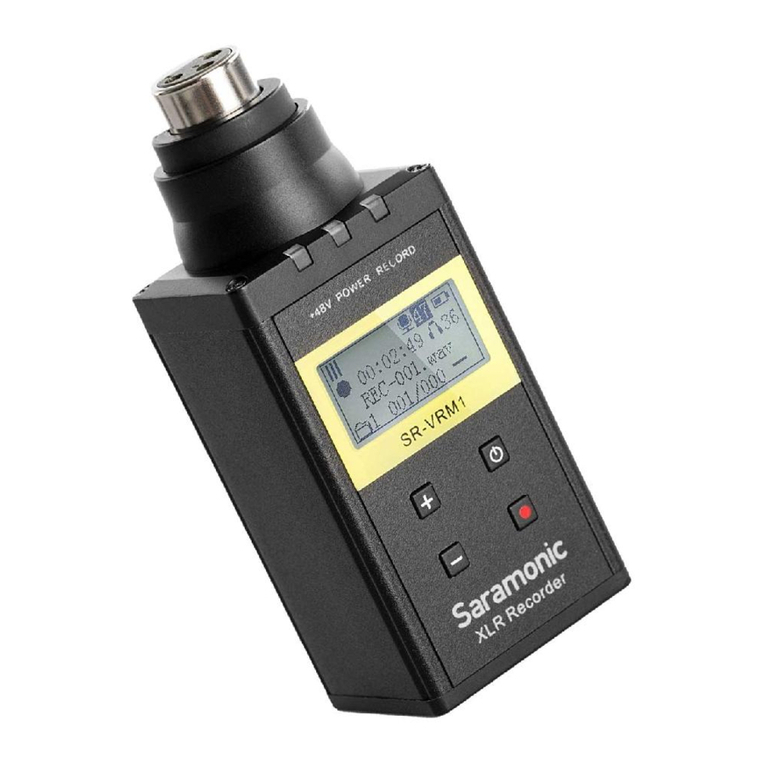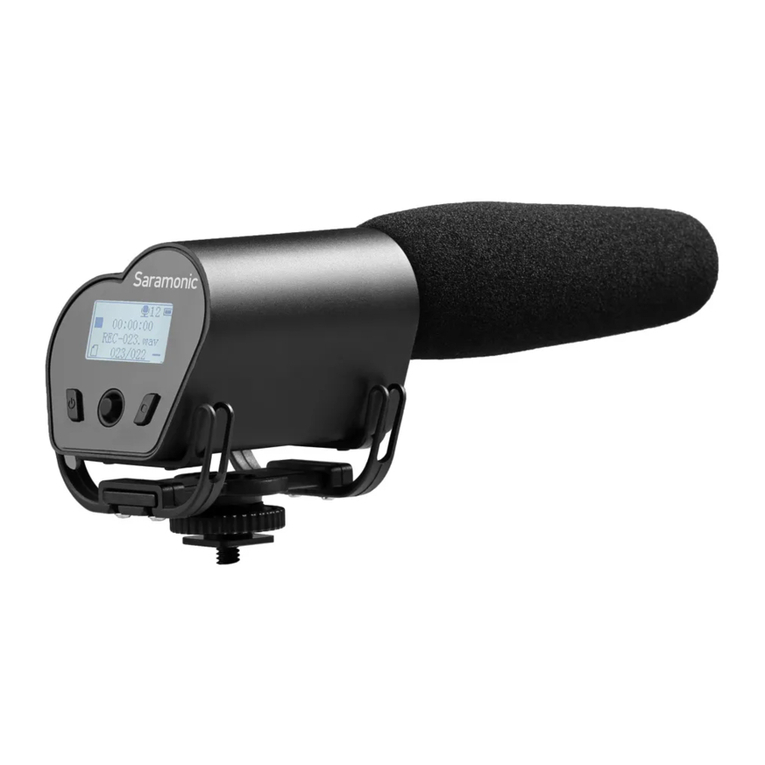
8
8. Specification
Recording channel 2
Recovery channel 2
Recording format
.WAV
(44.1kHz/16bit, 44.1kHz/24bit, 48kHz/16bit ,
48kHz/24bit, 88.2kHz/16bit, 96kHz/16bit)
Playback format
.WAV
(44.1kHz/16bit, 44.1kHz/24bit, 48kHz/16bit,
48kHz/24bit, 88.2kHz/16bit, 96kHz/16bit)
A/D conversion 24-bit, 128x oversampling
D/A conversion 24-bit, 128x oversampling
Signal processing 32-bit
Recording media Micro SD card (8-32GB)
MicroSDXC (64-128GB)
LCD LCD 128*64 ( with light )
Built-in stereo mic 90° X/Y stereo configuration
Unidirectional condenser
Gain 0 to +45dB
Minimum gain with
digital attenuation -30dB
Microphone Input 3.5mm (1/8”) Stereo Microphone Input
Line Input 3.5mm (1/8”) Line Level Input
Input level 0 to -45dB
Output impedance 2 kΩ
Line output 3.5mm (1/8) stereo jack
Output load
impedance 10 kΩor more
Rated output level -10dBm
Headphone output
level 20mW + 20mW into 32Ωload
Built-in Speaker 1W 8Ω
USB jack Type-C
Power required LR6 or Ni-MH AA battery X 2
USB DC 5V
Recording hours
Alkaline Battery
13.5 hours under 96kHz/16bit (wav)
19.5 hours under 44.1kHz/16bit (wav)
Weight 150g (5.3oz.)
Dimension 60 (W) x 167 (D) x 30 (H) mm
(4) PLAY MODE
Play 1 File: Play one selected .wav file for one
time.
Repeat 1 File: Play one selected .wav file
repeatedly.
Play Folder: Play .wav files in order of file name
of present folder.
Repeat Folder: Play all .wav files of present
folder in repeatedly.
(5) SYSTEM SET
Date & Time: Set the date and time so that all
files will include a time-stamp when exported.
LCD Backlight: Set background LCD light.
Select LCD backlight on, off or delay 5/10/15/30
seconds. Default setting is 30 seconds.
LCD Contrast: Set LCD contrast.
Set LCD screen contrast from 1 to 5. In LCD
contrast screen, press or to adjust contrast
level. Then press to confirm and exit.
Version: Version of the SR-Q2M.
Factory Reset: Restore factory settings.
Battery Type: Set the battery type for precise
power indication. Select Ni-MH or Alkaline.
Default setting is Alkaline.






























